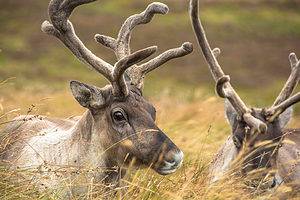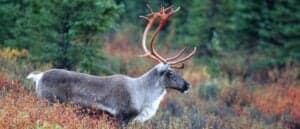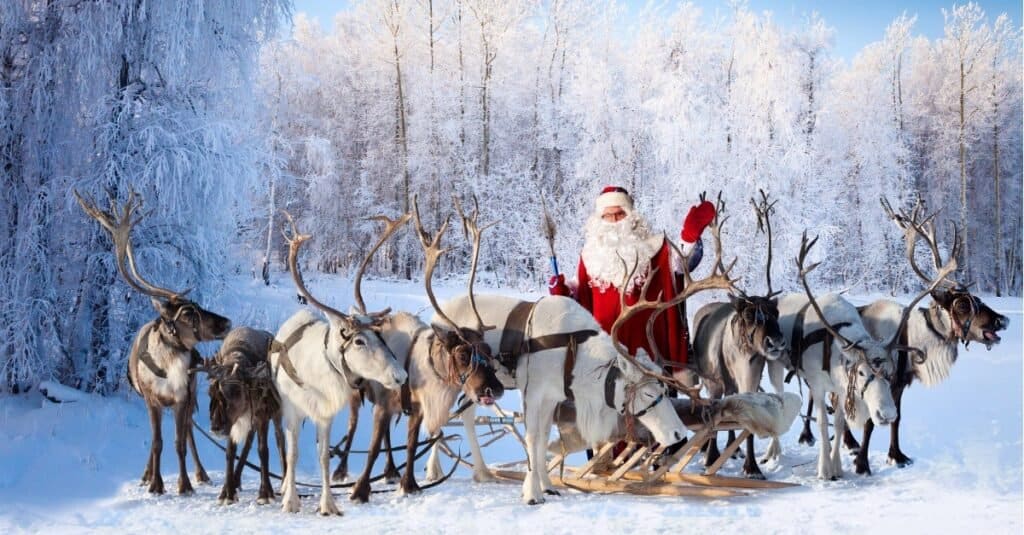
According to traditional festive legend in some parts of the world, Santa Claus’s reindeer are said to pull a sleigh through the night sky to help Santa Claus deliver gifts to children on Christmas Eve.
©iStock.com/Vladimir Melnikov
It’s that time of year! Christmas decorations abound, from the grocery store to the roadways we drive on. We see tinsel, lights, toys, wrappings, and Santa Claus all over. Santa Claus is often displayed with his eight loyal reindeer, nine if you count the beloved Rudolph! It’s these beautiful critters that allow Santa to visit all the youngsters on Christmas Eve. Their presence and our capacity to study and engage them for millennia are amazing! But how well-versed are you in the fascinating world of reindeer?
Just in time for the holidays, here are twelve incredible reindeer facts!
12. Reindeer have different names across the world!
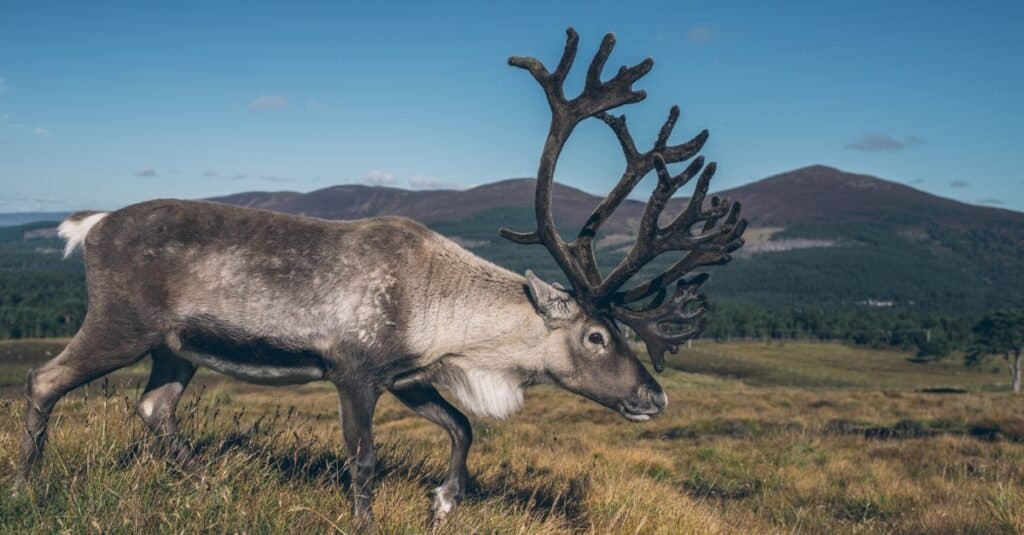
The Cairngorm reindeer in a beautiful colorful landscape in the autumn of Scotland.
©doliux/Shutterstock.com
A reindeer (Rangifer tarandus) is classified as a member of the Cervidae family of animals and is also known as caribou in certain regions. Domestic reindeer are known as reindeer in North America, while wild caribou are known as caribou. In Europe, they are known as reindeer regardless. Reindeer are a species of deer. There are over forty species of deer, many of which prefer milder weather, but reindeer prefer colder conditions.
11. Reindeer Have Unique Winter Adaptations

Male Caribou with a beautiful head of antlers on the fall tundra above the Toklat River, Alaska Range.
©Jeff McGraw/Shutterstock.com
Reindeer are a closely related species of deer found in the tundra and grasslands, but they prefer the cold, snowy climates of the northern hemisphere winters. It is difficult for a reindeer to survive outside of the frigid air. As a result, they tend to congregate in northern latitudes like Alaska, Canada, Europe, and Russia.
Because they spend 40% of their lives in the snow, reindeer have developed several unique adaptations. To help them stand on snow and squishy ground, their split-in-two cloven hooves provide traction. They’re also great swimmers, and their hollow fur helps keep them warm.
10. Like Rudolph, Reindeer have “Red” Noses
Much like Rudolph, reindeer can have “red” noses, too. The reindeer has a network of small veins to circulate heated blood around their nose to keep the air they intake warm. In freezing weather, these blood vessels supply and regulate the body’s temperature while also tinting the reindeer’s nose pinkish-red!
9. Reindeer “Click-Clack” as they Walk!
When reindeer walk, they produce a clicking sound. This “click-clack” is caused by the sesamoid bones of their feet snapping over the tendons. When it’s snowing or foggy, experts believe that the clicking helps herd members stay connected.
8. There is a Herd of Reindeer the Size of Seattle!
Russia has the biggest population and herds of reindeer, with an average of 700,000 reindeer, that’s about the same population as Seattle, Washington! Canada has the second-largest herds with an average of 200,000 reindeer. The number of reindeer in the wild is rapidly dwindling, and the species is now classified as vulnerable, which is a step closer to extinction.
This means that if reindeer numbers continue to plummet, the species will be listed as endangered. In some snow-covered places, such as the Arctic tundra, northern Asia, or North America, this species’ population is nearing the threshold of being labeled endangered.
7. Reindeer are Social Creatures
In their natural habitat, reindeer form large groups known as herds. In herds of ten or more reindeer, they travel, rest, and eat together. During spring, the number of members of their group grows significantly and can reach thousands!
6. Baby Reindeer are Called Calves
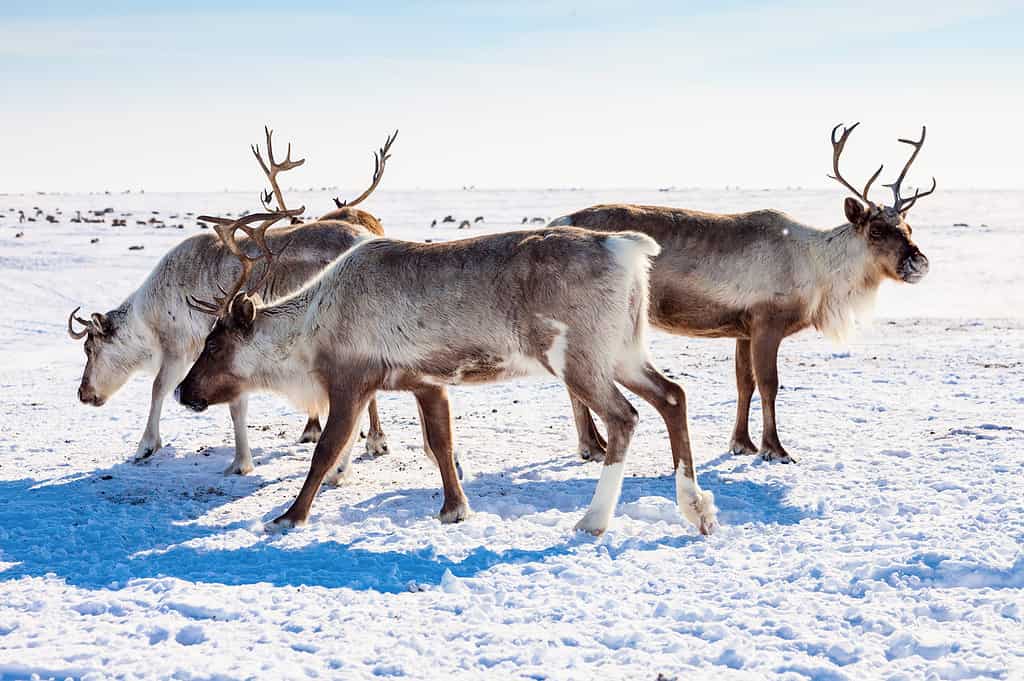
The reindeer is an iconic Christmas symbol brought about from the poem, “The Night Before Christmas.”
©iStock.com/Artpilot
Baby reindeer are called “calves” while a single reindeer is called a calf. The largest deer species, the moose, is also called a calf. However, other baby deer species are commonly called fawns.
In late September and early November, breeding season for reindeer is in full swing. Males use reindeer antlers to compete for females during this time of year. Up to fifteen female reindeer can be selected for mating by the victorious male reindeer. The female gives birth in an isolated location after the mating process. It takes female Reindeer around 228–234 days to give birth.
There are no outside furs on baby reindeer when they are born. Mother reindeer can readily identify their offspring in the wilderness, even among massive herds. As with people, a reindeer typically has just one baby at a time.
5. Reindeer have the Largest Antlers of Any Deer
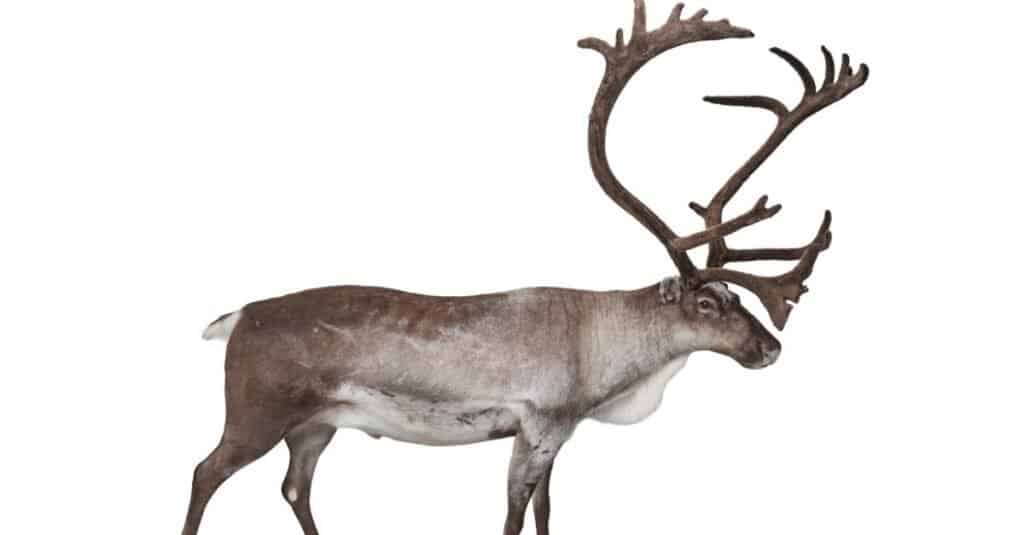
Male reindeer isolated on white background.
©iStock.com/klikk
Reindeer are larger than most deer and the overall fifth largest species of deer, Their coat is different than most deer species; usually grey-white, with flecks of brown. Adult reindeer have the largest antlers compared to their body out of all the deer species. For reindeer antlers to grow stronger and more stable, they shed their antlers once a year. Two layers of fur protect them from the elements: a soft undercoat and a thick, long-haired outer coat. Reindeer are about ten times the size of a dog, with a height of 180–214 cm (71–84 in) and a weight between 80–120 kg (180–260 lbs.). However, the largest reindeer can weigh up to 700 lbs!
4. Reindeers Communicate Like Dogs!
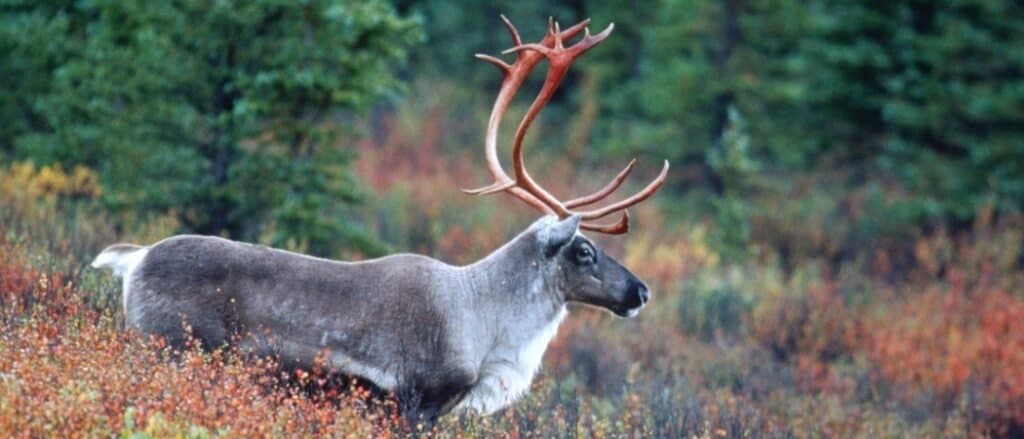
Reindeer Antlers
©iStock.com/KenRinger
Reindeer are vociferous members of the deer species. Reindeer use grunts and barks to communicate with one another, much like dogs do. They also use their bodies to communicate with each other. They use these sounds and displays for mating, as well as alerting their herds or calves if they become separated or threatened.
3. Reindeer Females have Antlers
Reindeer are the only deer species in which the females grow antlers, making them unique among deer! This is because even female reindeer need antlers to dig through snow and soil in search of food and to defend themselves in rough terrains.
2. Reindeer have up to a 20 Year Lifespan!
A wild adult reindeer or caribou can live up to 20 years in captivity, although the typical lifespan is about 15 years. Males have a shorter life than females, as much as four years less! This is likely because of the male counterpart’s larger size and hence greater dietary requirements. Also, because of their behavior, males are more likely to put themselves in harm’s way and sustain injuries.
1. Male Reindeers are Bulls and Females are Cows
Male reindeer are also called bull or stag, and female reindeer are referred to as cows. Male reindeer are distinguished from females by their larger stature, tougher hooves, and more impressive antlers.
So, there you have it; twelve fascinating facts about reindeer for the holidays! Hopefully, there were some that surprised or even delighted you. We wish you a Merry Christmas!
The photo featured at the top of this post is © iStock.com/Vladimir Melnikov
Thank you for reading! Have some feedback for us? Contact the AZ Animals editorial team.



